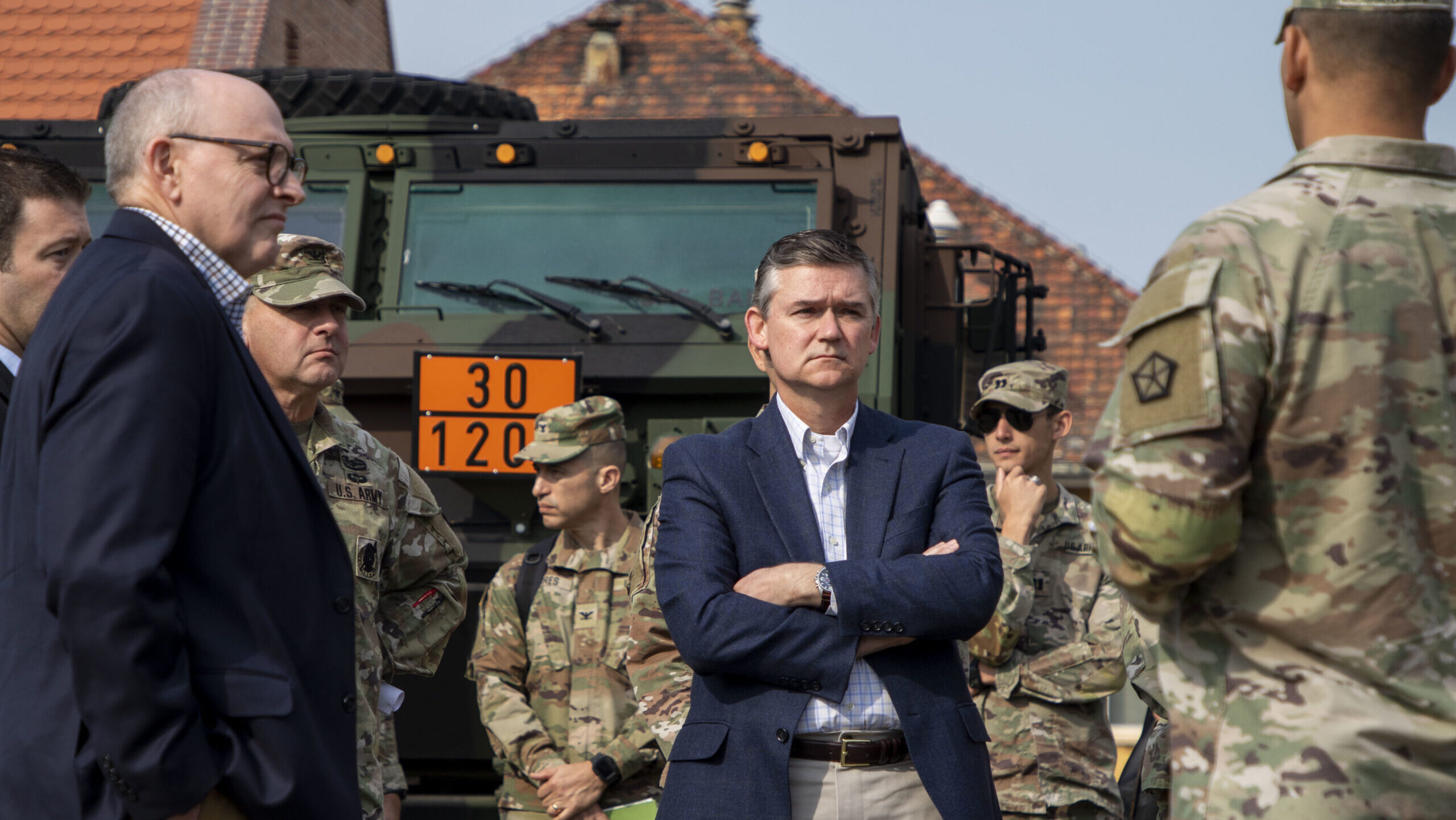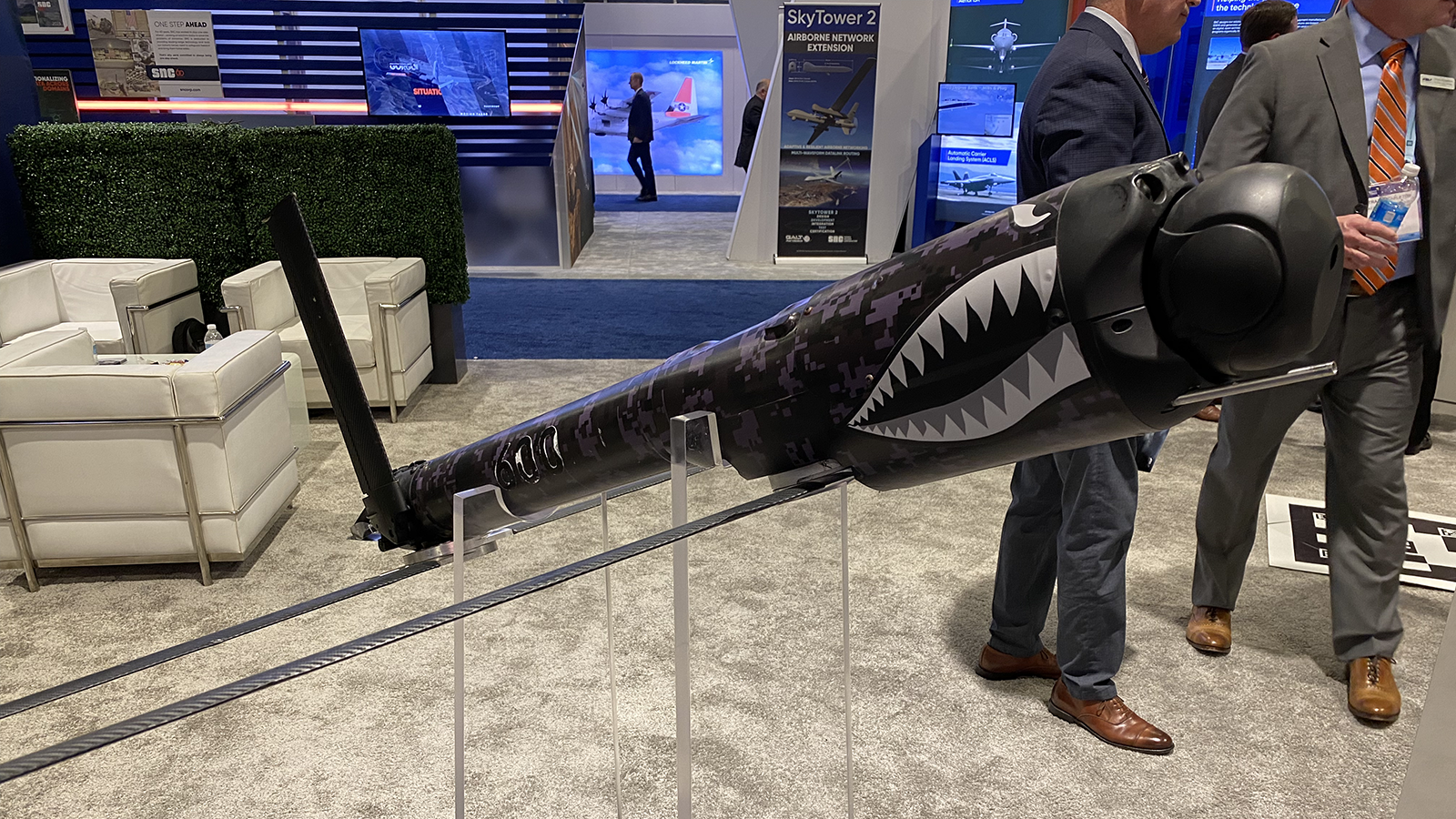
Douglas R. Bush, assistant secretary of the army for acquisition, logistics and technology, receives a briefing of current V Corps operations at Victory Corps Forward during a visit to Camp Kościuszko, Poland, Sep. 8, 2022.
WASHINGTON — Pentagon leaders remain cagey how they’re picking and financing an ambitious plan to rapidly crank out unmanned systems under the new Replicator initiative, but a senior Army official said today his service has at least one big-ticket item in that first tranche.
“In the Army’s case, we had something we were already working on that was similar [to Replicator’s requirements], so we nominated that,” head of Army acquisition Doug Bush said on a panel today at the National Security Innovation Base Summit moderated by Breaking Defense Editor-in-Chief Aaron Mehta. “And luckily, that made the cut. And so that was a win win for the Army. ”
Bush added that so far the Army is Replicator’s “biggest participant… in terms of quantity.”
The first Replicator iteration was focused on countering China’s military mass by cranking out “multiple thousands” of “attritable autonomous systems” across “multiple domains” within two years — think unmanned surface vessels and loitering drones.
Bush previously told Breaking Defense the service proposed three unmanned systems for the first iteration of Replicator, and there have been subsequent reports that the Switchblade 600 one-way attack drone was selected. Breaking Defense has not independently confirmed that reporting, and today Bush didn’t disclose.

AeroVironment’s Switchblade 600 bares its teeth at Sea Air Space. The Army submitted three systems as Replicator candidates, and one was ultimately selected for the first iteration. (Aaron Mehta/Breaking Defense)
“We are limited in what we can talk about. That’s a choice the department’s making, so, we’re buttoned,” he added.
At least one Navy unmanned surface vessel has also been picked up for Replicators’ first draft round, according to USNI News. Air Force Vice Chief of Staff Gen James Slife insinuated that his service will need to wait until at least round two.
“The Air Force has got several compelling programs in the pipeline that can be considered not quite as technologically mature as some of the Army programs that are gonna be kind of in the round one on this,” the four-star general said on stage with Bush.
“But we’re excited, frankly, about the prospects of Replicator,” he added.
Breaking Defense reached out to the Air Force for more details, and a spokesperson said the service did not request Replicator funding for fiscal 2025. However, Bush told reporters earlier this month his service also didn’t have a specific Replicator funding line request for FY25, which means the additional fund for selected systems could simply be included under official programs, a funding classified pot elsewhere in the budget, or something else.
Ambiguity over the initiative comes, in part, at the behest of Deputy Defense Secretary Kathleen Hicks. Since unveiling Replicator in late August 2023, she has spent time broadly touting its path forward while also warning that specifics may remain sparse to prevent potential adversaries, like China, from learning more.
However, she disclosed that the Pentagon is asking lawmakers to pony up $500 million for Replicator this fiscal year, FY24, and is seeking an additional $500 million in the FY25 budget submission it just sent to Capitol Hill.
As details about initial Replicator systems continue to trickle out, Hicks and other department officials are eyeing the next iteration. Bush told Breaking Defense the Army is again throwing three systems on the table, and could hear back on which ones, if any, are selected sometime before Oct. 1.
Navy Capt. Alex Campbell, director of the Defense Innovation Unit’s (DIU) maritime portfolio, said earlier this year that software will be a big focus for the next wave of the effort.
“We are in the stages of finalizing proposals for what we call tranche two of Replicator, which is another … batch of platforms that can be accelerated to meet that 18- to 24-month timeline,” Campbell said in February. “And I think in tranche two… the direction from senior leadership is to also focus on the software that enables all those platforms to function and to exist to work together and to do things that, frankly, we’ve never seen on the battlefield before.”
Breaking Defense’s Michael Marrow contributed to this report.
Air Force awards SNC $13B contract for new ‘Doomsday’ plane
The win is a major victory for the firm in a competition that saw the surprise elimination of aerospace giant Boeing.


























